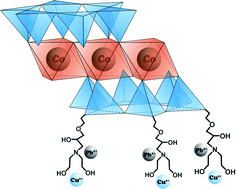Energetic features of copper and lead sorption by innovative aminoalcohol-functionalized cobalt phyllosilicates
Abstract
Inorganic–organic

* Corresponding authors
a
Institute of Chemistry, University of Campinas, UNICAMP, P.O. Box 6154, 13084-971 Campinas, São Paulo, Brazil
E-mail:
airoldi@iqm.unicamp.br
Inorganic–organic

 Please wait while we load your content...
Something went wrong. Try again?
Please wait while we load your content...
Something went wrong. Try again?
M. A. Melo Jr and C. Airoldi, Dalton Trans., 2010, 39, 10217 DOI: 10.1039/C0DT00413H
To request permission to reproduce material from this article, please go to the Copyright Clearance Center request page.
If you are an author contributing to an RSC publication, you do not need to request permission provided correct acknowledgement is given.
If you are the author of this article, you do not need to request permission to reproduce figures and diagrams provided correct acknowledgement is given. If you want to reproduce the whole article in a third-party publication (excluding your thesis/dissertation for which permission is not required) please go to the Copyright Clearance Center request page.
Read more about how to correctly acknowledge RSC content.
 Fetching data from CrossRef.
Fetching data from CrossRef.
This may take some time to load.
Loading related content
